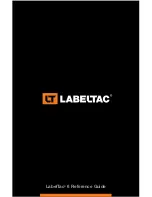
EN 34
Grinding
•
Coffee loses its aroma quickly after grinding. To get the best
out of the coffee beans, we recommend that you grind them
just before brewing – preferably by hand. The advantage of
manual coffee mills is that the grinding mechanism can usually
be adjusted steplessly and therefore more precisely, and the
coffee mill can also be cleaned more conveniently, making it
easy to switch between different types of coffee.
•
The degree of grind is one of the decisive factors. If it is too
fi
ne, the water takes too long to percolate through, which
involves a longer brewing time. If the grind is too coarse, the
brewing time is too short because the water passes through
too quickly. A medium grind is therefore recommended for
the pour-over method. The grain size of conventional table
salt can serve as a model. If you want to be on the safe
side, let a barista of your choice grind a small portion of the
beans and use this as a comparison when grinding at home.
Dosage
•
To obtain a successful result, you should keep a very close
eye on the ratio of coffee powder to water. If the water
content predominates, the coffee loses its taste. If you use
too much coffee powder, the coffee becomes too strong.
We recommend 15 g coffee per 250 ml water. Of course,
tastes vary from person to person, so you need to get to
know your own ideal ratio.
The kitchen scales not only make dosing easier for be-
ginners, but are also used by experienced baristas. With
the help of these you can weigh the quantities of coffee
powder and water very precisely and so ensure the ideal
ratio between the two ingredients.








































